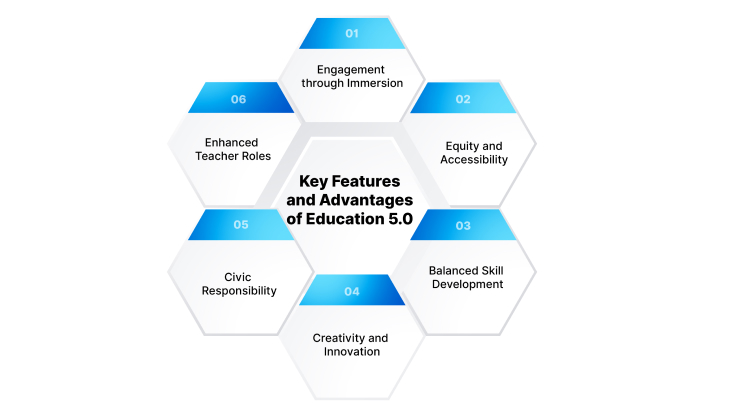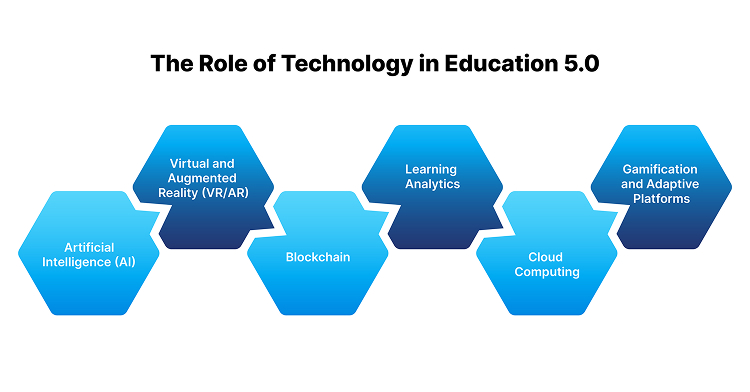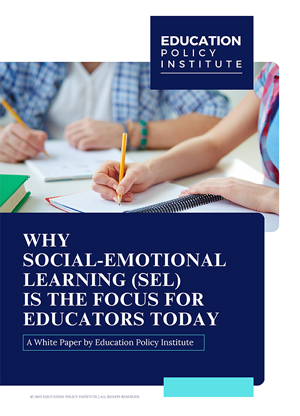The 21st century has ushered in a time of profound change in how knowledge is acquired, applied, and shared. With the emergence of digital technologies, shifting job markets, and the need for holistic development, education systems worldwide are being redefined. Enter Education 5.0 — a transformative approach that seeks to humanize learning while embracing innovation. This new model goes beyond imparting knowledge and skills; it nurtures empathy, creativity, emotional intelligence, and adaptability, aligning education with the complex demands of a rapidly changing world. As society becomes increasingly interconnected and technology-dependent, Education 5.0 emerges not just as a desirable option but a necessary evolution in the quest to empower learners for the future.
What is Education 5.0?
Education 5.0 is the next stage in the evolution of learning, characterized by the integration of advanced technologies with a deeply human-centered philosophy. Unlike earlier education models focused solely on academic achievement or skill-based learning, Education 5.0 aims to cultivate learners who are not only intelligent but also ethical, empathetic, and socially responsible. It promotes a paradigm shift from transactional learning to transformational learning.
This model responds to the broader socio-economic and environmental challenges of the 21st century, such as climate change, inequality, and mental well-being. Education 5.0 encourages students to become changemakers, capable of addressing real-world problems using creativity, collaboration, and innovation. It envisions schools and universities as hubs for nurturing global citizens who can think critically, act compassionately, and use technology as a tool for meaningful change.
The Phases of Education
To fully appreciate the shift to Education 5.0, it’s essential to understand the evolutionary path of education:
- Education 1.0: This traditional phase emphasized passive learning in a teacher-centered environment. The classroom was authoritative, and memorization of facts formed the core of instruction. There was minimal use of technology, and the focus remained on standardization.
- Education 2.0: Marked by the introduction of basic technology like computers and projectors, this phase introduced limited interactivity. Pedagogical practices began to move toward group work and multimedia learning.
- Education 3.0: Coinciding with the internet boom, this phase embraced digital resources and online collaboration. Learners began accessing global content, and knowledge became more decentralized. Personalized learning pathways started to emerge.
- Education 4.0: Rooted in the Fourth Industrial Revolution, this phase integrated AI, big data, VR, and adaptive learning systems. It emphasized real-time feedback, skills for Industry 4.0, and experiential learning environments.
- Education 5.0: In response to the dehumanization of learning through over-technologization, this phase seeks to balance high-tech tools with high-touch human values. The goal is to produce socially conscious, emotionally intelligent individuals who can co-create sustainable futures.
Pillars of Education 5.0
Several foundational pillars uphold the Education 5.0 model:
- Human-Centric Learning: Students are viewed as whole individuals with intellectual, emotional, social, and spiritual dimensions. This pillar supports compassionate and values-based education.
- Personalized and Adaptive Learning: Leveraging data analytics and AI, learning experiences are customized to each student’s pace, interest, and style. It develops autonomy and deeper engagement.
- Interdisciplinary Approach: The merging of science, arts, and humanities encourages holistic thinking. Problems are no longer solved in isolation but require cross-domain knowledge.
- Lifelong Learning: The traditional school-to-retirement trajectory is obsolete. Education 5.0 encourages continuous upskilling, reskilling, and unlearning.
- Sustainability and Global Citizenship: Students are encouraged to think beyond personal success and work toward collective wellbeing, environmental sustainability, and cultural empathy.
- Technology as a Partner: While tools like AI and AR are central to the model, they are deployed with ethical foresight and human supervision.
Key Features and Advantages of Education 5.0
Education 5.0 represents a transformative approach to learning, integrating advanced technologies with human-centric values to prepare learners for the complexities of the modern world. Below are the key features and advantages that make Education 5.0 a compelling model for contemporary education:

1. Engagement through Immersion
Education 5.0 leverages immersive technologies such as Virtual Reality (VR) and Augmented Reality (AR) to create interactive and engaging learning experiences. These tools allow students to explore complex concepts in a simulated environment, enhancing understanding and retention. For instance, VR can transport students to historical sites or inside the human body, providing experiential learning that traditional methods cannot offer.
Gamification further enhances engagement by incorporating game-like elements into the learning process. Features such as points, badges, leaderboards, and challenges motivate students by making learning fun and competitive. This approach not only increases motivation but also creates a deeper connection with the material.
2. Equity and Accessibility
A cornerstone of Education 5.0 is its commitment to making education accessible to all, regardless of geographical or socio-economic barriers. Cloud-based platforms and open-source resources enable students from remote or underserved areas to access quality educational materials. Adaptive technologies also cater to diverse learning needs, ensuring inclusivity for students with disabilities or different learning styles.
3. Balanced Skill Development
Education 5.0 emphasizes the development of a holistic skill set that includes cognitive, digital, and emotional competencies. By integrating interdisciplinary curricula, students learn to apply knowledge across various domains, establishing critical thinking and problem-solving abilities. This balanced approach prepares learners for the multifaceted challenges of the modern workforce.
4. Creativity and Innovation
Moving beyond rote memorization, Education 5.0 encourages students to be creators and innovators. Project-based learning and collaborative assignments stimulate creativity, allowing students to develop solutions to real-world problems. This focus on innovation nurtures an entrepreneurial mindset and prepares students to contribute meaningfully to society.
5. Civic Responsibility
By embedding social and emotional learning into the curriculum, Education 5.0 nurtures empathy, ethical reasoning, and a sense of global citizenship. Students are encouraged to engage with community issues and understand their role in creating a sustainable and equitable world. This emphasis on civic responsibility cultivates socially conscious individuals committed to positive societal change.
6. Enhanced Teacher Roles
In the Education 5.0 paradigm, teachers transition from traditional instructors to facilitators and mentors. They guide students through personalized learning journeys, leveraging technology to personalize instruction to individual needs. This shift empowers educators to focus on shaping critical thinking, creativity, and emotional intelligence, rather than solely delivering content.
How to Achieve the Best of Education 5.0
Realizing the full potential of Education 5.0 requires systemic change across multiple levels:
- Curriculum Redesign: Curricula should be multidisciplinary, problem-based, and rooted in real-world applications. They should include ethics, environmental education, social responsibility, and emotional intelligence.
- Teacher Empowerment: Teachers should be trained not just to use technology but to adopt learner-centric pedagogies. Emotional literacy, adaptability, and continuous learning must become integral parts of their professional development.
- Technology Integration: Schools must invest in infrastructure and ensure equitable access to tools like AI-driven platforms, VR labs, and digital collaboration spaces. However, technology must remain a means, not an end.
- Inclusive Learning Environments: Inclusive design ensures that education is accessible to diverse learners, including those with disabilities or from marginalized communities. Language, culture, and socioeconomic background must be considered.
- Community and Industry Involvement: Collaborations with businesses, NGOs, and local communities can enrich education. Industry experts can mentor students, and communities can provide local learning challenges and insights.
- Policy Innovation: Governments should support experimental models, fund research, and provide autonomy to educators. Policies should encourage lifelong learning and public-private partnerships in education.
The Role of Technology in Education 5.0
While Education 5.0 is human-centered, technology is its vital enabler. Let’s see how it plays a major role in the era:

- Artificial Intelligence (AI): AI-driven systems personalize content, track progress, and identify learning gaps. Chatbots and virtual assistants also support administrative efficiency.
- Virtual and Augmented Reality (VR/AR): These technologies bring abstract concepts to life — from touring historical sites to simulating laboratory experiments.
- Blockchain: Helps in secure record-keeping, credential verification, and decentralized learning systems.
- Learning Analytics: Educators and students can use real-time data to measure outcomes, tweak strategies, and stay aligned with goals.
- Cloud Computing: Enables seamless collaboration, storage, and sharing of learning content across geographies.
- Gamification and Adaptive Platforms: These promote intrinsic motivation, mastery-based learning, and active participation.
Technology must, however, be implemented ethically, ensuring privacy, inclusivity, and human oversight.
Conclusion
Education 5.0 is more than a trend — it is a paradigm shift that redefines the purpose and process of learning for an interconnected, uncertain world. It calls upon educators, policymakers, technologists, parents, and learners to co-create a future where learning is inclusive, meaningful, and transformative. By blending the best of human values with technological possibilities, Education 5.0 prepares individuals not only for employment but for enlightened living. The time to reimagine and rebuild our education systems is now.





